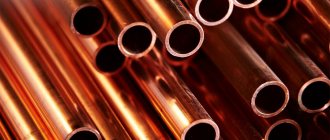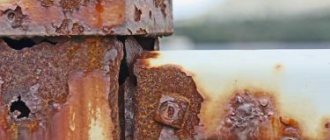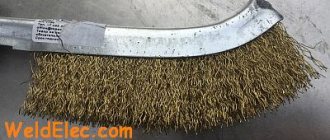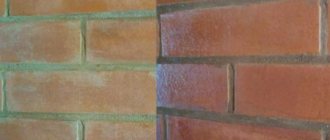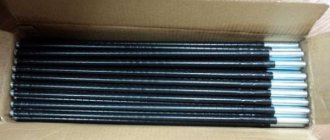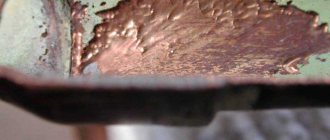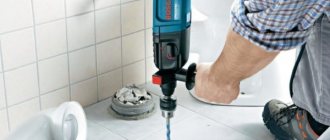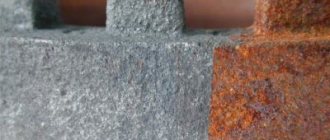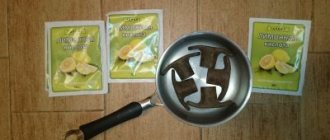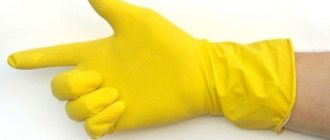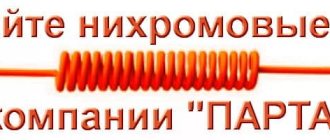Why does rust appear?
Metals are subject to rust due to the fact that they are not mined and used pure, but in the form of chemical compounds with oxygen, carbon, water, sulfur and other elements. Corrosion is not a problem for pure metals, since they do not tend to form compounds with environmental substances. However, there are few such materials - silver, gold and platinum.
There are a huge number of different ways to remove rust from metal, but not all of them work as desired.
Most mined contaminated metals are smelted, purified, and reduced to make them pure. However, in this case they become unstable and tend to react with environmental elements. Thus, when a metal comes into contact with air, an oxide is formed, and with moisture, a hydroxide is formed. These processes are natural for iron and are called corrosion, and their result is rust.
Even if you can’t remove the rust the first time, with some effort you can always return the item to its original appearance.
Since metals are mainly used as durable materials, which are the basis for various structures, they are constantly in contact with the environment and the corrosion process is inevitable. If air oxygen and moisture are constantly present, then after some time the iron can be destroyed to the ground, completely converted into rust.
There are various ways to remove corrosive plaque if the process has not gone too far.
However, corrosion is not a very fast process, so iron products are destroyed over a fairly long period of time. In addition, new methods are being invented to delay the appearance of rust as much as possible.
Note! High-quality removal of rust from a metal surface is one of the most effective ways to preserve a product in proper condition.
However, rusty deposits can often be present on various non-metallic surfaces such as tiles or bathtubs. This occurs due to rusting plumbing fixtures and other equipment with metal elements that are exposed to the environment. Rust is then carried by water, contaminating surfaces in addition to limescale. However, all such coatings are quite easy to clean.
Household chemicals are the most effective means for removing rust.
It is worth removing rust in the following cases:
- Before gluing or painting metal products. Traces of corrosion will not allow glue or paint to firmly adhere to the metal surface, and therefore they must be removed.
- To protect against destruction. In order for a metal product to last a long time, it must be promptly cleaned of iron oxides and coated with anti-corrosion materials such as zinc oxide.
- For aesthetic reasons.
Where problems appear
Corrosion appears in places that are affected mechanically. The most common problems that arise are:
- First, rust appears on the surface of the thresholds;
- problems often arise with the hood due to small pebbles from the vehicle in front;
- the car underbody suffers from rust;
- Aggressive chemicals negatively affect the area where arched structures are located under the wheels of a vehicle.
Note! If rust appears in a timely manner and is eliminated, the car owner can prevent further problematic situations. After this, corrosion does not spread.
To cope with the problem, you need to decide how to paint over rust on a car with your own hands.
Special removal products
Chemicals allow you to quickly and effectively remove contamination of almost any complexity and age. Such products can be produced in various forms - liquid, spray or gel. In this case, all the necessary components are already included in the composition.
You can buy rust remover liquid in specialized stores.
Important! When working with concentrate, the substance must be diluted with water in accordance with the instructions.
The cleaning products contain the following elements:
- Acids, for example, hydrochloric, sulfuric, phosphoric or silicon. The substances they contain can only be used to clean acid-resistant surfaces. The strongest acids are used in combination with inhibitors due to their high causticity.
- Inhibitors. These substances slow down the chemical reaction of the acid with the metal surface, which allows the solution to remove only the rust layer without destroying the structure of the product. In this case, a special protective layer is formed on the processed surface.
- Surfactants (surfactants). Nonionic substances are more common due to their high cleaning power and good compatibility with other components.
- Dyes, water and some other substances.
When starting to remove rust with your own hands, always wear plastic or rubber gloves.
Note! Special chemicals are highly caustic, so work with them should only be done using thick rubber gloves, respirators and safety glasses in a well-ventilated area with running water.
Rust converters are quite popular. These substances do not remove existing plaque, but block the development of corrosion. In this case, the rust turns into a new protective film, which leads to the formation of chemically pure iron. However, after treatment with such compounds, the surface of the metal changes its color, becoming blue-violet.
Rust converter is a chemical solution or primer that is applied to the surface of iron or iron alloy.
Chemical exposure
How can you remove rust from metal using chemical methods? The product is selected in accordance with the required degree of rust removal from the metal. The choice is up to the buyer. Sometimes cleaning is done using several means at the same time.
So what can you use:
- Acid for rust removal. The substance can be purchased at any hardware store. The method of use is usually indicated on the packaging. Anti-rust acid is an aggressive agent, so it can dissolve not only the oxidized environment, but also metal surfaces.
- Anti-rust product. By corroding the corrosive coating, it preserves the material itself on which the problem area was concentrated. This is the best rust remover that can be used at home.
- Rust converter. This is a currently relevant remedy that is actively used to remove damaging formations. The key to effectiveness lies in the correct use of the composition in relation to a particular surface and material.
There are actually a lot of drugs that cope remarkably well with corrosion and its derivatives. Each product has its own characteristics regarding use and principle of operation. The choice depends on how quickly the cleansing needs to be done and what level of damage will be treated.
Mechanical removal
Since corrosion products have low adhesion, they are easy to remove from the surface of the product by mechanical action. This method is convenient for removing rusty deposits from large, smooth metal surfaces. It is also advisable to use this method for cleaning heavily rusted products as the first stage of completely removing contamination.
The mechanical method includes removing rust using special brushes, grinding wheels, and sandpaper.
To clean large items, you can use a grinding machine, starting with the coarsest grains and finishing with the finest grains. Metal brushes and abrasive attachments for an angle grinder or drill are also suitable. It is more convenient to clean small parts with sandpaper.
Products with complex geometry are difficult to mechanically influence, so it is more effective to use other methods for them.
Note! The areas of metal treated in this way remain without protection from the environment, and therefore, without special treatment, they will become covered with rust even faster.
Painting materials
Before applying paint to a cleaned surface, it is better to prime it, but many modern compositions make it possible to do without a primer. The following paints are used for painting metal:
- epoxy, based on silicone resins with a hardener. High toxicity requires external use only;
- oil - a traditional composition, before using which steel products are pre-coated with primer. The presence of a pungent odor requires painting to be carried out in a well-ventilated area;
- alkyd – has good stability, does not require preliminary priming, can be applied in any conditions;
- acrylic - a modern type created on the basis of polymers. Non-toxic, easy to use, requires careful preparation;
- rubber – perfectly protects roofs and external elements exposed to precipitation.
These are classic paints and varnishes that are found everywhere and are popular. However, there are other, more specialized mixtures:
- primer-enamel applied specifically to rust, which prevents its development;
- anti-corrosion, preventing the entry of moisture and oxygen;
- forging, giving wear resistance;
- toxic nitro paints.
All of them can provide additional protection, as well as improve performance and reliability. All these actions are an important part of preparing products for further painting and increasing their service life.
Tags: Enamels and paints
Traditional methods
The main rules when using any of these products are strict adherence to the exposure time to prevent damage to the product itself and thorough drying to delay re-corrosion.
Aluminium foil
In this case, the foil acts as an analogue of an abrasive brush, that is, it has an exclusively mechanical effect. A piece of foil must be crumpled into a tight ball that can be used to clean the surface. It is worth considering that this method is suitable for minor stains on household appliances. But to clean rusty pipes it is better to use chemicals.
You can remove rust from such areas and give them a smooth look using a crumpled up ball of aluminum foil.
Vinegar
It is worth using white vinegar, since its flavored and colored analogues not only will not help remove dirt, but can also leave new stains. The operating procedure is as follows:
- pour vinegar into a spray bottle;
- apply the substance to the affected area;
- leave the treated surface for a couple of hours;
- remove plaque with a wire brush;
- wash off traces of vinegar with warm water;
- Dry the treated area in the sun or wipe thoroughly with a rag.
Vinegar is the most popular and affordable means for removing corrosive deposits from metal products and more.
Note! Small metal objects can be placed entirely in vinegar for up to a day.
Soda
Effective enough for small stains. Soda must be diluted with water to obtain a paste-like mass, which should be applied to the surface in a thick layer. After half an hour, the plaque can be easily removed with a metal sponge or brush.
If necessary, the procedure can be repeated.
Lemon acid
A fairly effective remedy with a number of advantages:
- availability;
- maintaining the appearance of paint covering a metal product;
- absence of aggressive chemicals;
- harmless to the skin of the hands (the use of gloves is still recommended).
This method removes corrosion in all hard-to-reach places.
Before starting work, the metal surface must be degreased, which can be done using dishwashing detergent. Next, the product is placed in a concentrated solution (80 g of citric acid per 100 ml of warm water) for several hours. In this case, the reaction begins within a few minutes, as indicated by the formation of bubbles. After the reaction is completed, the surface should be washed under running water, if necessary, removing remaining contamination with a wire brush.
Oxalic acid
The algorithm for working with this substance is as follows:
- wash the rusted product using any dishwashing detergent;
- dry thoroughly;
- mix six teaspoons of oxalic acid with 300 ml of water;
- immerse the object in the solution for half an hour;
- remove rust residues with a stiff brush;
- dry the product thoroughly.
When using it, you must adhere to safety precautions: wear safety glasses and rubber gloves.
Important! When working with oxalic acid and its solution, you must use rubber gloves, a respirator and safety glasses.
Hydrochloric acid
A 2% hydrochloric acid solution will effectively clean rust from a white item. In this case, it is enough to simply treat the item to be cleaned with acid until the contamination disappears. Afterwards, it must be rinsed in a solution of ammonia and water (a couple of tablespoons of ammonia per liter of water).
Using this product, you can effectively clean rust from white items.
Hydrogen peroxide
This substance has oxidizing and reducing properties, which allows it to effectively remove traces of rust from objects such as a bathtub, toilet bowl, knives or tools.
Note! To increase the effectiveness of the peroxide, it can be used in combination with trisodium phosphate.
Hydrogen peroxide is used according to the following scheme:
- dilute four tablespoons of trisodium phosphate powder in three liters of water;
- carefully pour 50 ml of peroxide into the solution, dividing into five portions;
- soak the product in the mixture for half an hour;
- thoroughly wipe the treated area with a regular sponge, then leave the product for another ten minutes;
- rinse the surface with clean water.
Coca-Cola
This drink contains phosphoric acid, and therefore can be used to remove rust. It is enough to place the damaged product in liquid for 25-30 hours, after which it should be rinsed with clean water and wiped dry.
Surely many housewives have heard that you can remove rust with cola.
Toilet cleaners
If the rusty coating is extensive, use radical methods - chemical solutions. This homemade toilet cleaner perfectly removes rust from any iron alloys. It contains an alkali or acid (hydrochloric, oxalic), which dissolves oxide molecules.
The product is available in the form of a gel, liquid or powder. A gel preparation is best suited for metal processing. To get rid of rust, do this:
- Apply the chemical to the problem area.
- Leave for 10 minutes.
- Remove rust with a dry cloth or soft brush.
- Rinse the metal surface with warm water.
The main condition when using household chemicals is caution. Avoid contact of acid with skin and vapors in respiratory tract. Wear rubber gloves and a respirator when working.
How and with what to remove rust from metal
Removing traces of corrosion from various objects has its own specifics that must be taken into account.
From the body of a car
Rust often forms on the car body. The following products are best suited to remove it:
- Orthophosphoric acid. Its solution is applied to a sponge, which is used to wipe the car body.
- Zinc. Mixtures are made from it that allow you to get rid of contamination after the first treatment.
From a water tap
The optimal remedy for rust on metal, especially for cleaning enameled metal surfaces, is Adrilan, produced for washing household appliances. Since it is very concentrated, it is diluted in warm water before use.
An effective cleaning agent, and not only against rust, but also against any contaminants.
Note! The faucet in the bathroom or kitchen must be cleaned very carefully to avoid damaging the coating.
From a bicycle
You can easily get rid of rust stains that appear on a bicycle frame over time using citric acid. Moreover, before removing rust from metal, the surface must be degreased, and then rinsed and dried thoroughly.
From skates
If skates are stored for a long time in conditions of high humidity, a rusty coating begins to form on them. You can remove it using a mixture of baking soda and lemon juice. To do this, the components are mixed until a mushy substance is obtained, which must be applied to the contaminated surface for an hour and a half. After this, the skates need to be washed and dried.
Effective folk remedies will help eliminate rust stains from skates.
From a horseshoe
An old rusty horseshoe can be cleaned with oxalic acid. To create a solution, you need to mix acid and boiled water in a ratio of 1 to 12. A horseshoe is placed in the resulting liquid for forty minutes, after which it is washed with running water.
From the tools
Metal tools that are rarely used will corrode over time. You can clean them from rusty deposits using a vinegar solution. To prepare it, you need to mix white vinegar with warm water in equal proportions. The resulting liquid is applied to contaminated instruments, after which they can be easily cleaned with a wire brush or sponge.
Pour vinegar into a container large enough to fit the spoiled item. Immerse the product in a container with product.
Once cleaned, polished metal instruments can be treated with a solution of gasoline and wax or paraffin to protect them from further corrosion. To obtain it, you need to add paraffin or wax to gasoline heated in a water bath.
From the nut
You can clean the nuts from corrosive deposits using a vinegar solution. To do this, dilute 100 ml of white vinegar in a bucket of water, after which all rusted nuts are placed in a container for three to four hours. After this time, the nuts are washed with clean water and wiped off any remaining rust.
Cleaning small household items
All of the above methods can be used to clean small metal objects. The only difference is the ability to place the rusty product entirely into the product being used.
Follow all the above rules and you will notice that rust can be removed quickly and without much effort.
Types of body corrosion
Experts distinguish the processes of corrosion of the body and components of a car according to the criteria of the conditions of its occurrence and the nature of the destruction that it brings. Types of corrosion according to conditions:
Atmospheric (belongs to the electrochemical category)
Metal is affected by environmental factors. Precipitation condensate, once on the surface of the material, is adsorbed by it, causing harm. Atmospheric corrosion is divided into dry, wet, and wet.
- Dryness passes slowly without causing serious harm. Aggressive impurities in the atmosphere accelerate the process.
- The wet appearance causes disturbances in the form of spots or “bugs”.
- The wet version appears at humidity close to 100%. Its peculiarity: drops of condensate are collected in a film. It slows down the appearance of the rusty layer and turns out to be a kind of protector.
Crevice corrosion occurs in the cracks and gaps of the car body
Formed during welding processes. Parts and parts of the body are connected with hardware. When installing bolts, screws, and rivets, rust may appear in the gaps. The reason is the accumulation of moisture and dust.
Pitting Its appearance is due to damage to the paintwork of various parts of the car. Destruction goes deep, often with a small surface area. It often affects the chromium-nickel coating of moldings, handles, and decorative elements.
Contact characteristics of this type are caused by the contact of parts made of different materials, or the same, but with different potential.
Cavitation type of corrosion occurs under the influence of a fluid medium. Destruction is caused by the impact of steam and water bubbles and the effect of oxygen contained in the water. A hydraulic shock is formed in the cavern. The bottom of the car is most vulnerable.
Based on the nature of the destruction, general and local corrosion are distinguished. The general one is determined by the influence of the external environment as a whole. A polluted environment with the presence of aggressive substances leads to the appearance of rust on the entire body. Then a continuous corrosion coating appears on it. The first to suffer are the wheel arches and wheel struts. The local species is characterized by the appearance of rusty spots and a high rate of development of the process in a limited location. The spots look like dots, bugs, or threads.
Stages of rust
- At first, rust may appear as isolated spots. Sand the rusty layer, prime it, tint it. This is enough to remove damage.
- In the future, many dots or “saffron milk caps” may appear. The rust needs to be removed urgently.
- Through hole. This is already a dangerous stage of defeat. Significant body repairs are needed, not just removing the corroded surface.
In some cases, a motorist himself, with his own hands, can cope with the task of combating corrosion deposits on automotive structures and parts. The main thing is not to let the situation get worse. The process shouldn't go too far. There are proven and proven means for removing corrosion from a car.
Preventing rust
To protect metals from rust, various alloys are created. Thus, chromium, molybdenum, nickel, sulfur, titanium and other elements are often added to the composition, which are responsible for certain properties of the resulting alloys. However, this method is not always acceptable and is also quite expensive.
A stainless alloy is formed if the chemical composition contains more than 13% chromium.
A more convenient option is to apply coatings to existing metal, forming a barrier between the surface of the product and the environment, which helps slow down the corrosion process. Paints or primers are often used as a coating, but the most effective option is to apply a thin layer of another metal that rusts very slowly. For example, iron can be coated with chromium, tin, copper or nickel. At the moment, zinc is considered the most optimal option, combining ease of application, low cost and high efficiency. It corrodes three times slower than the vast majority of metals and, when applied correctly, can completely stop corrosion for 25-30 years.
Galvanizing is a coating of metal with a layer of zinc to protect it from corrosion.
A rusty coating eventually affects almost any metal. However, with timely cleaning and treatment, the service life of the product can be significantly extended.
You can remove rust stains from any metal surfaces.
How does rust form on a car?
Metal corrosion is the process of damage to the surface of steel as a result of negative environmental influences. The chemical equivalent of rust is iron hydroxide Fe(OH)3.
Rust is the result of the reaction of steel products with water and oxygen. Typically, there are two types of corrosion mechanisms: chemical and electrochemical. The main feature of the latter is the presence of electrolytic materials, namely water and condensate. Another option is the contact of materials with different redox potentials.
Causes of rust include:
- Significant temperature changes. These phenomena are often observed in areas with cold winters, warm and very hot summers. When temperature fluctuations occur, liquids settle in the form of condensation, which usually appears on the surface of the metal elements of the machine. And if there are constant temperature changes, then over time the metal will become covered with a corrosive coating;
- High humidity. In regions with a humid climate, the car will be most susceptible to the appearance of rust spots. They are formed on body components, on internal components;
- Addition of certain alloying materials to the composition of metals. Their main purpose is to increase strength and wear resistance. But under unfavorable conditions they can cause corrosion;
- The influence of road surfaces. Poor quality roads with a large number of gravel components or foreign objects can lead to damage and destruction of the protective layer on the surface of the underbody of the car. In areas where the paint is knocked off, corrosion lesions form;
- Exposure to reagents. These substances are used to reduce slipping on roads. Aggressive components have an adverse effect on the tires and car frame;
- Manufacturing defect. To ensure maximum protection of the body, it is important to make a high-quality coating. For this reason, all components must be properly primed and painted. If the coating is applied incorrectly or incorrectly, this can lead to corrosion.
These are common reasons that lead to the appearance of “bugs” or “saffron milk caps”. This is what many car owners call areas with rust. And it is important to eliminate them immediately after they appear, because corrosion tends to spread quickly and increase the damaged area.
But it’s still worth considering that the speed at which rust spreads on a car body depends on many factors. And the main one is the conditions of keeping the car, namely the aggressiveness of the environment. If vehicles are constantly outdoors, especially in winter, then corrosion will spread much faster.
Rusty cars are destroyed quickly, so there is no need to start defeat. It is important to carefully check the condition of the body, and if a swelling of the paint layer is found on the surface, then it is necessary to remove the swollen paint, and then the area is thoroughly cleaned. The main goal of these manipulations is to stop the spread of metal corrosion.
How does corrosion affect the performance of equipment and tools?
What is metal corrosion? As people of the older generation would say, this is such a hellish foreign group that destroys our brain with its music. But let’s not argue about tastes and leave the “Metal Corrosion” group alone, but the essence of the statement is true: this is a chemical process that destroys a metal surface.
Equipment and tools made of metal and subjected to a corrosive process begin to change in appearance. At first it is almost invisible to the naked eye. Then rusty pitting and roughness appear on the surface
The process is started, and if it is not stopped, the damage penetrates deep into the material. All metal devices damaged by rust begin the countdown until they are written off. Therefore, to prevent this from happening, you need to remove corrosion in a timely manner.
How to remove plaque using folk remedies?
The effectiveness of the exposure method is increased by a combination of chemical treatment and mechanical action. Homemade recipes are based on the use of easily available products that may already be in the household. Their main advantage is low cost and availability.
As a rule, the choice in favor of folk recipes is made with minor corrosion. Most often it is not difficult to deal with it.
Coca-Cola
Using Coca-Cola in the household allows you to clean various surfaces. One popular recipe is to use the drink to remove rust.
In order for the orthophosphoric acid in the drink to take effect, you can use a rag soaked in Cola. A rag is soaked generously in the drink and applied to the surface that needs to be cleaned from corrosion.
This recipe is suitable when the rust has not penetrated deep into the metal, since the concentration of phosphoric acid in Coca-Cola is low. The exposure time should be at least several hours, preferably a day.
But if the metal is seriously damaged, this method is ineffective. At the end of exposure, the cola is washed off with water and the surface is wiped dry. When using Cola, it is enough to use only rubber gloves as a means of protection. Read more about using Coca-Cola against rust here.
Lemon
One of the easiest recipes to deal with rust is to use citric acid.
To do this, the acid powder is diluted so that a very concentrated solution is obtained, with all grains completely dissolved.
The product can be used in two ways:
- apply generously with a sponge to the affected areas of the metal;
- soak a rag in the solution and apply to the rusted areas.
The last of the presented options is more effective, but even this method will not eliminate serious corrosion.
The duration of action of the composition is at least an hour. After this, the metal should be cleaned with a stiff brush, and the residue should be washed off. Read more about the use of citric acid in the fight against rust here.
Vinegar
Vinegar also allows you to remove rust during mild corrosion processes.
For exposure, undiluted vinegar is used. If the rusted items are small in size, they can be placed in a container and simply poured. For large metal objects, ensure that the cleaned surface comes into contact with vinegar.
After exposure to acetic acid, the surface is refined by mechanical rubbing and washing off the remaining vinegar.
Before painting directly, the metal must be primed. You can learn more about using vinegar to combat metal corrosion in this article.
Sorrel
Oxalic acid is a drug that comes in powder form. This remedy gives good results, but requires very careful use, as it is poisonous. Use may only be carried out in compliance with all necessary protective measures.
Before using acid, the metal surface should be prepared - washed with soap and dried. The treatment solution is prepared by diluting 6 tsp. acid in 300 ml. water.
How to use:
- Apply the solution generously with a brush.
- Leave for 30-40 minutes.
- Remove loose rust.
- Rinse off any remaining product with water.
Oxalic acid is suitable for advanced cases and large area surface treatment.
Orthophosphoric
Phosphoric acid is a commonly used component of ready-made rust converters.
This substance is highly effective and can be used even in advanced cases.
To prepare metal for painting, an acid concentration of 15-20% is required. Exposure to orthophosphoric acid should not be long - just 5 minutes is enough. After this, you can walk over the surface with a brush.
All work must be carried out in conditions of sufficient ventilation and using protective equipment. Read more about the use of phosphoric acid here.
